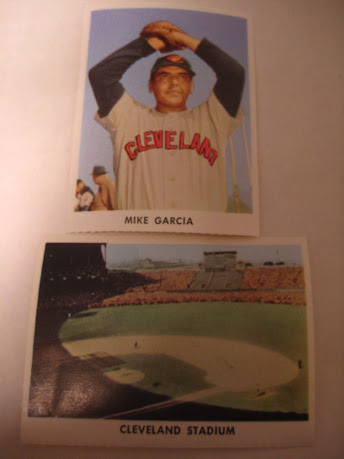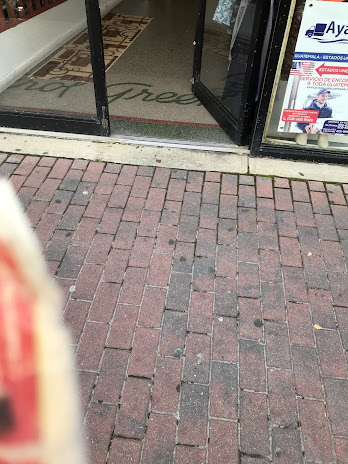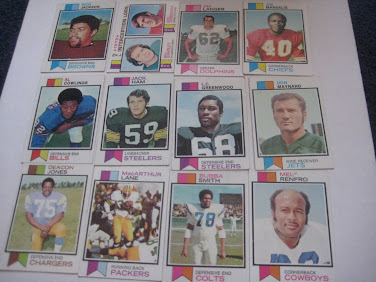One of the company's original baseball card photographers, Lou Sauritch worked at Fleer for 23 years. I spoke with him on the phone and he kindly answered my baseball card questions with some great stories.
"My brother had a surfboard company and Tim Flannery was going to do a photo with the surfboard to promote it. I initially suggested taking the photo at the beach but Flannery didn’t want to. He said “Have your brother bring the board to the stadium” which is what we did.
The Bill Ripken card (photographed by Steve Babineau) was so surprising to me because the photo had to be checked so many times – first of all you get the picture, then it goes to Fleer, then it has to go to print it. After that card came you had to check everything. One time I was shooting Juan Berenguer with the Giants. I shot regular and then I shot up from underneath. Later I got the film back and I saw that the bottom of the brim of his hat said “a*****e” on it. I asked Juan about it the next time I saw him. He said “Yeah, when Roger Craig comes to take me out, I flip the hat up at him”.Terry Forster’s card in 1981, our first year, he has his leg crossed with a big smile. I was shooting him in the dugout and he farted very loudly, the whole dugout started laughing.
My favorite cards - I took photos of my son who played in the minors for the Orioles for three years before he got injured. Fleer had minor league cards at the time. This was in Bluefield, West Virginia and then when he came up to California, High Desert. I had shot his managers like Butch Wynegar, Andy Etchebarren, Joe Ferguson.The Flannery card was another favorite because it was different. All the card companies were boring until Upper Deck came out and you had action shots and guys in the dugout, it really helped the industry.I made a lot of good friends among the players. Don Baylor was a good friend of mine, we stayed close until he passed away, that was very difficult. Rod Carew and I talked every day. I’ve known him since 1979. We used to golf all the time until his heart attack.
I used to photograph both Griffeys, I grew up in a small town in Pennsylvania near where they lived. I did a lot of work for Gargoyle Sunglasses that he used to promote. I got a call from Griffey’s agent right after he signed the glasses contract, he told that if there was any ad work I would do it. That was a great experience.In Bo Jackson’s rookie year, my friend Mitch Haddad, the Donruss photographer, and I were trying to take photos of him but he kept refusing. We explained the situation to Frank White, and he said “Bo, get over here. See these two guys here, they’re good guys, you do what they tell you,” and he posed for us. Mitch now photographs TV shows - George Lopez, West Wing, NCIS. We used to travel all the time together. We were buddies, would share a room, go to rib places.
We had a good relationship with certain veterans. The rookies would see them talking with you and know “this guy must be decent”. Made good friends like Baylor and Carew. Some were difficult. Dave Kingman was a real a*****e. One time there was nobody around, he was just leaning on the batting cage. I politely went up to him and said “Dave, can I get a few shots of you?” He got angry and said, “Can’t you see I am thinking!” Another time he told me he wanted a picture with his dog. I wanted to say no but I didn’t.
I did take a photo of Jason Giambi with his dog. I saw him with the dog and asked “Can I take a picture with your dog?”, and he said “Yeah, sure!”
Some of these guys were real characters. Dan Plesac – He originally wanted one where he was stretching out on the ground like a first baseman reaching for a throw. Fleer wouldn’t go for it, but we got one instead where he posed as a hitter with a bat and helmet.Mark Grant was another one – he told me to go high up in the stands, he was going to have a catcher’s mask in his hand, reaching for a pop fly. Fleer said no to the photo. I told them, “Do you think I could get a pitcher to take that pose if he didn’t want to?” We ended up doing the one that looked like he was a hockey goalie with a baseball bat and glove.
Magic Johnson’s rookie year I shot the Lakers. A friend of mine worked for Ebony Magazine and needed some pictures of Magic.
I got into photography because I collected cards. I went to these collectors shows all the time, and I met the curator of the Angels Hall of Fame. He tells me, “Why don’t you start a company writing press guides and doing the photos?” I ended up doing 18 of the 24 teams at the time. Then I got a press pass for the Angels, borrowed my brother’s camera, and got more and more into it. I was not the team photographer but gave them lots of photos. Then in 1980 I saw a tiny article in the LA Times about the baseball card lawsuit, and called Fleer. About two months later they called me back and I started working for them. Steve Babineau and I were their first two photographers – he did the East Coast and I did the West Coast. I worked for them from 1980 through 2003 spring training. The industry was sliding, we had been sold a number of times. They went under shortly after, so I got out at the right time. There are so many cards these days – people come up to me all the time asking what their cards are worth, but they’re usually not worth anything."
Thanks!




















































